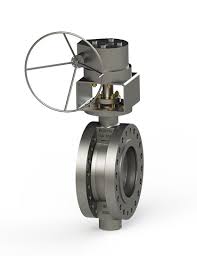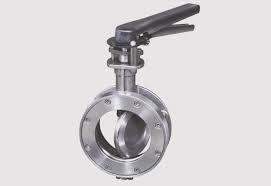Metal Seated Butterfly Valve

The Application of Metal Seated Butterfly Valve
The Metal Seated Butterfly Valve, including options from Cameron, offers robust performance in demanding applications. Unlike the resilient seated butterfly valve, this valve utilizes metal seating for enhanced durability and reliability. Constructed with A105 material and adhering to standards like API 607, it ensures long-lasting operation even in high-temperature or abrasive environments. Equipped with trim 12 material for precise flow control, it’s a preferred choice for critical processes. Consider options like the Swissfluid butterfly valve for specialized applications. With features like the split butterfly valve, it provides versatile solutions for various industries.
Features of Metal Seated Butterfly Valve
- Bi-directional Sealing: ZECO’s metal seated butterfly valve ensures no internal leakage under both forward and reverse pressure, meeting API 598’s zero leakage standard.
- Double Security Architecture: The valve’s design prevents wear and tear under medium pressure, avoiding issues like deformation or dislocation of the butterfly plate and stem.
- Replaceable Sealing Ring: Featuring independent sealing surfaces for the butterfly disc and valve seat, damaged sealing rings or seats can be easily replaced.
- Forged Valve Seat: The valve seat, made of all-metal alloy steel, offers high hardness, suitable for abrasive media, high temperatures, and pressures.
- Lightweight and Cost-effective: ZECO’s metal seated butterfly valve provides a lightweight, cost-effective, and maintenance-free solution for high-pressure applications.
The Parameter of Metal Seated Butterfly Valve
- Valve Size: Available in various sizes, typically ranging from a few inches to several feet in diameter.
- Pressure Rating: Indicates the maximum pressure the valve can withstand, commonly specified in pounds per square inch (psi) or bars.
- Temperature Rating: Specifies the range of temperatures within which the valve can effectively operate without compromising its performance.
- Material: The valve’s construction material, including the body, disc, stem, and seat. Materials may include stainless steel, carbon steel, or specialized alloys to suit different operating conditions.
- Connection Type: Describes how the valve connects to the piping system, such as flanged, wafer, lug, or grooved ends.
- Actuation: Indicates whether the valve is manually operated or automated, and if automated, the type of actuator used, such as pneumatic, electric, or hydraulic.
- Sealing Mechanism: Specifies the type of sealing mechanism used to prevent leakage, such as metal-to-metal or metal-to-graphite.

The Operation Theory of Metal Seated Butterfly Valve
- A216 SCB Material: The valve components, including the body, disc, and stem, are often made from A216 SCB material for enhanced durability and resistance to high temperatures and pressures.
- Tamper Switch Butterfly Valve: Some metal seated butterfly valves are equipped with tamper switches, which detect unauthorized operation or tampering of the valve, providing additional security and control.
- 2 1/2 Butterfly Valve: Refers to a specific size of butterfly valve, indicating its diameter, commonly used in industrial applications where moderate flow control is required.
- 1/2 Inch Butterfly Valve: Denotes a smaller size of butterfly valve, suitable for applications with lower flow rates and space constraints.
The Parameters Table of Metal Seated Butterfly Valve
| Parameter | Description |
|---|---|
| Valve Size | 2″ – 24″ (larger sizes available upon request) |
| Pressure Rating | ANSI Class 150 – 600, PN10 – PN100 |
| Temperature Rating | -50°C to +650°C (-58°F to +1202°F) |
| Body Material | A216 SCB Carbon Steel, Stainless Steel, Alloy Steel |
| Disc Material | Stainless Steel, Duplex Steel, Inconel |
| Seat Material | Stellite, Tungsten Carbide, Hard-faced Metal |
| Stem Material | Stainless Steel, Inconel, Monel |
| Connection Type | Wafer, Lug, Flanged |
| Actuation | Manual, Electric, Pneumatic, Hydraulic |
| Sealing Mechanism | Metal-to-Metal, Metal-to-Graphite |
Relevant Information about Metal Seated Butterfly Valve
- Rotor: In a metal seated butterfly valve, the rotor refers to the disc or butterfly plate. It is the primary component responsible for controlling the flow of fluid through the valve. The rotor rotates within the valve body to either allow or block the flow of media.
- Stator: The stator in a metal seated butterfly valve is essentially the valve body itself. It provides the stationary housing for the rotor and other internal components. The stator is typically made from materials such as carbon steel, stainless steel, or alloys, chosen for their strength and corrosion resistance.
- Universal Joint: A universal joint is not typically a component of a metal seated butterfly valve. However, it’s worth noting that in some valve designs, especially those with remote or automated actuation, universal joints may be used in the valve’s actuation system to transmit motion between the actuator and the valve stem.
- Shaft Seal: The shaft seal in a metal seated butterfly valve prevents leakage along the valve stem where it passes through the valve body. It typically consists of packing material, such as PTFE or graphite, compressed around the valve stem to create a seal against the fluid pressure.
- Driving System: The driving system of a metal seated butterfly valve refers to the mechanism used to actuate or operate the valve. This can include manual handwheels or levers for manual operation, as well as pneumatic, electric, or hydraulic actuators for automated operation. The driving system is responsible for rotating the rotor to open or close the valve as needed for flow control.

